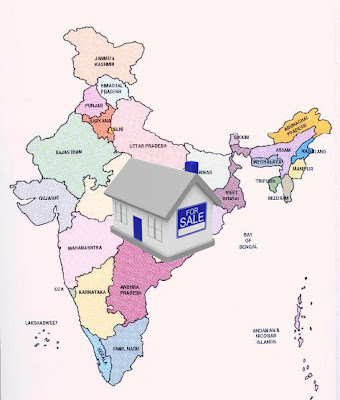MYTH 1: There is a ‘bubble’ in the Indian real estate market, and it will burst soon.
Fact: There is no evidence of a ‘bubble’. When a bubble develops in any market, it is because prices for that particular commodity or asset have gone through the roof and beyond affordability. This is far from the case in Indian real estate.
The residential sector is led by end-users and it is they who dictate the state of the market. Neither is there a significant correlation between the state of the stock market and that of the property market. There are no indications that investor activity has overtaken genuine buyer activity. In residential, the proportion is approximately 80% end users and 20% investors. In the commercial sector, the proportion is almost 100% end users who are taking property on lease. There are instances of overheating but these are localised.
MYTH 2: Indians do not figure very large as property buyers on the international property market.
Fact: Residential rates at Mumbai’s Nariman Point or Cuffe Parade are priced anywhere between Rs 25,000-55,000 per sq feet. For the price of a 2BHK flat in these areas, one can buy a villa in Dubai or London’s suburbs, a luxury flat or a standalone house in New Jersey. Many Indian buyers have woken up to this fact and are buying homes abroad.
Myth 3: Thanks to India’s booming economy, higher salaries, higher aspirations and easier home loans, most Indians are buying high-end homes now.
Fact: The accent is still very much on affordable housing. As before, the Great Indian Middle Class is not motivated by its need for greater convenience, but by the ability to pay for a home. In that context, the greater demand will always be towards affordable housing options.
MYTH 4: Major Indian developers are abandoning the MIG sector and concentrating on high-end residential projects because it makes better business sense.
Fact: Most big-banner developers still see sense in constructing mid-income housing projects, since they can construct more volumes. The demand in terms of units is phenomenal and developers getting into this segment can build for years to come. They have the assurance of sure-shot absorption, as well. Most major Indian developers are NOT shifting from affordable to high-end housing-only branching out. While they get into middle-segment housing, they continue to build high-end projects.
Myth 5: The metros are still the best places to invest in real estate.
Fact: The real estate boom is causing many of our metros and even some of the previously popular Tier II towns to saturate at an incredible pace. Property prices there skyrocket beyond the reach of middle-income homebuyers, causing them to look a little further afield each year. Investors observe these migration trends, analyze the magnitude and scope of activity, and identify one or the other new town as the next coming thing.
A fundamental real estate investment mantra is that emerging localities are preferable to established and often saturated ones. Established areas eventually reach a peak in terms of appreciation potential, after which the growth rate either slows down or stagnates. Moreover, there is little scope for new market drivers such as malls to find a place in saturated localities - meanwhile, prices remain high.
This is not the best of scenarios from an investment point of view, since optimal investment requires low entry levels and appreciable growth within a realistic time-frame. Therefore, as one or the other destination reaches its peak potential on all these counts, new ones come into the limelight.
Source: The Times of India
